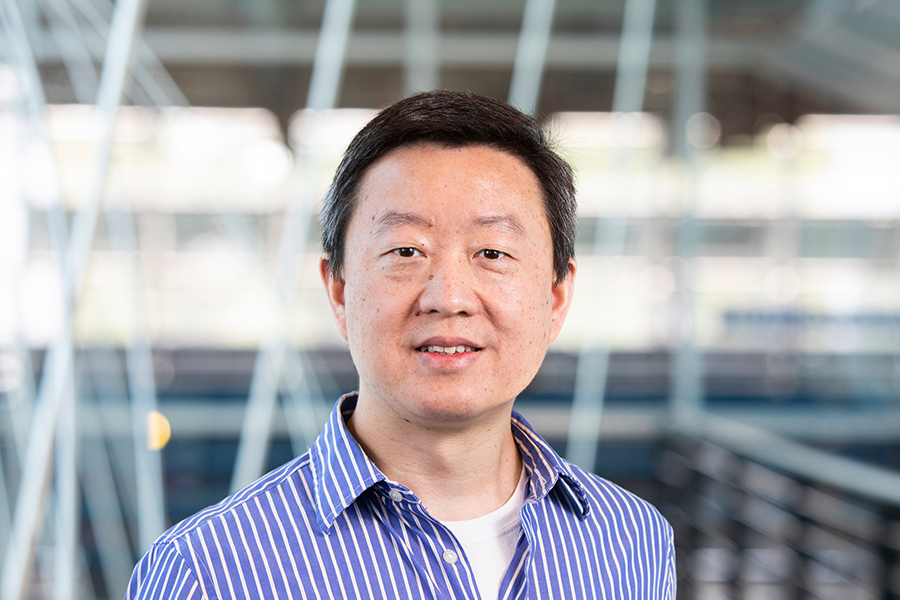
Quantum computers hold the potential to revolutionize the possibilities for solving difficult computational problems that would take classical computers many years to resolve. But for those computers to meet their potential, they need working quantum bits, or qubits. The hunt for a better qubit is a major project of researchers around the world, who are trying different materials and methods in their search.
In a study published in Progress in Quantum Electronics, researchers from the FAMU-FSU College of Engineering explored an unconventional and promising approach to building qubits by using quantum fluids and solids. Their article examined how electrons trapped just above the surfaces of ultraclean quantum fluids and solids such as liquid helium and solid neon offer a combination of chip-level control and ultra-clean, defect-free environments, presenting a promising path toward scalable, high-fidelity qubits that could overcome key limitations of existing quantum technologies.
“This platform blends the best of both worlds,” said Wei Guo, a professor in the Department of Mechanical Engineering and co-author of the paper. “The electron resides in high vacuum above a pristine material surface, and at the same time, we can use chip-based microwave technologies to control and read out its state. That’s a very powerful combination.”
To make qubits work well, designers seek to optimize a few key parameters. One parameter is coherence time, a measurement of how long a qubit can maintain its complex quantum state. Other important parameters include gate fidelity, or the probability that qubit operations will process correctly, and scalability, or the ease at which large numbers of qubits can be manufactured.
Current front-runner platforms, such as superconducting qubits and trapped-ion qubits, have drawbacks. Superconducting qubits are compatible with existing chip fabrication and ideal for scaling, but material defects limit their fidelity, requiring many physical qubits to form one reliable logical qubit. Trapped ions, on the other hand, offer long coherence times and high gate fidelities due to their vacuum isolation, but scaling up these systems is constrained by complex control hardware.
The review article highlights an emerging alternative: using electrons confined above the surface of quantum fluids or solids, exotic materials that exist only at cryogenic temperatures. These electrons can be precisely manipulated via on-chip microwave circuits — like superconducting qubits — while also benefiting from a vacuum-like environment free of material defects — like trapped ions. This hybrid advantage offers a potential path to high-fidelity, scalable qubits without the compromises of current systems.
The article draws on a growing body of work in the field, including important contributions from Guo’s group. In 2022, a team involving Guo demonstrated quantum bit operation using electrons on solid neon, a breakthrough that received wide attention. More recently, his group revealed how electrons can spontaneously bind to surface features on solid neon, forming new quantum states that impact qubit behavior.
The review also incorporates major developments in electron-on-helium qubits and other quantum fluids and solids-based platforms by researchers worldwide. It serves as a unified and accessible reference for scientists, especially those outside the small quantum materials community, interested in exploring these emerging approaches to quantum device development. By bridging quantum materials science and quantum information engineering, the article lays the groundwork for new directions in qubit design, which could help unlock the full promise of quantum computing.
“If there’s no quantum bit, then whatever algorithm you develop, there’s no use,” Guo said. “The quantum fluids and solids field is fairly small. The people in this field understand the properties of quantum fluids and solids. But for the much larger quantum information science field, people are not familiar with materials like superfluid helium and solid neon, and how they could be used to make qubits. Now, even researchers and engineers outside this field can use this information to do their design work.”
The idea for the review originated at a workshop hosted by the FSU Quantum Initiative. Co-authors include Denis Konstantinov of the Okinawa Institute of Science and Technology and Dafei Jin of the University of Notre Dame. The work was supported by the National Science Foundation, the Air Force Office of Scientific Research, the Julian Schwinger Foundation for Physics Research, and the Gordon and Betty Moore Foundation.




